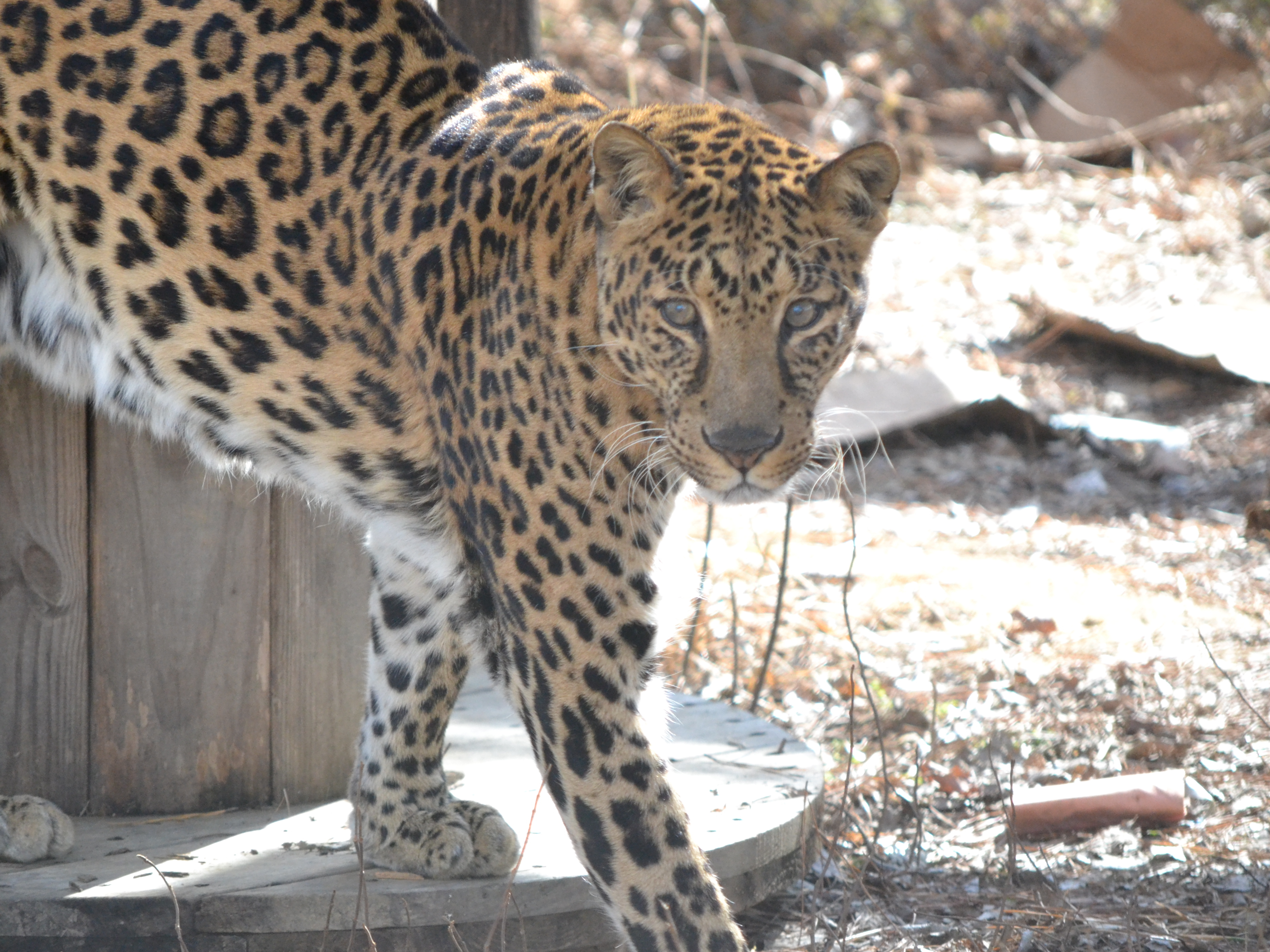Ocelots (scientific name: Leopardus pardalis) are nocturnal, meaning they are most active during the night and sleep during the day. They are capable of purring, but the sound they make most often is a low growl. Ocelots are also solitary cats, meaning they live alone most of their lives. They spend most of their time in trees. Sometimes they even get prey to come to them in the trees – ocelots in the wild will play dead on a tree branch until a curious monkey gets too close.
- Brown fur with a chain of rosettes or spots on their bodies
- Dark markings around their eyes
- White spots on the backs of their ears – a trait that all spotted wild cats have, which helps them communicate with their young

 WHERE WE LIVE
WHERE WE LIVEOcelots primarily live in Central and South America. They used to live in the southwestern part of the United States but were hunted to near extinction in that area for their pelt (skin and fur). They are now a protected species and a small population is growing in Texas.
Like other cats, ocelots will mark their territory with their scent. Ocelots have a special adaptation for this; they have oil-based urine so the frequent rains in the rainforest can not easily wash it away.
25-35 pounds


12 pounds
20-39 inches long

36 inches long


An ocelot can take down prey 3 times larger than itself

90 pounds
OBLIGATE CARNIVORE
- Deer
- Birds
- Snakes
- Rodents
- Rabbits
Ocelots are opportunistic hunters; they will eat anything they can catch.
![]()
- Habitat Loss
Ocelots are losing a lot of their habitat to farming and urbanization. - Parts Trade
Ocelots were once hunted for their pelt (skin and fur). It takes between 30 and 35 ocelots to make a single coat. They are now a protected species. - Considered: Least Concern
in the
United States!
only
of ocelot!








